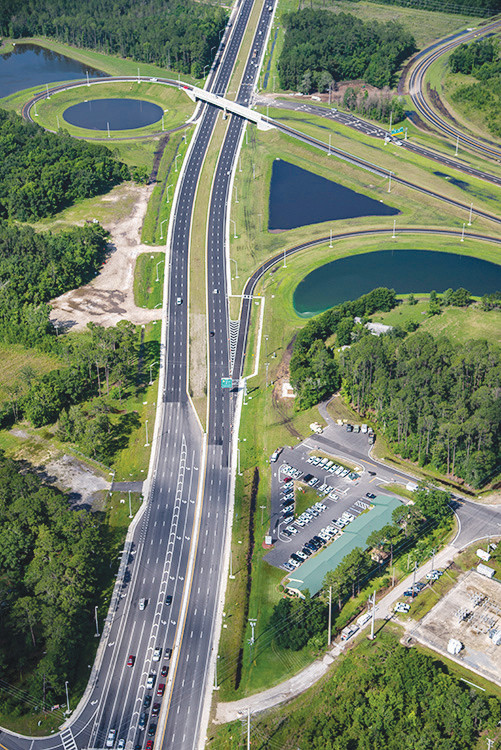After 60-year wait, tolls to become reality
OAKLEAF – It’s nearing time to whip out that SunPass. Clay County can expect tolls on the First Coast Expressway starting next year.
The first phase of the First Coast Expressway project, 12 …
This item is available in full to subscribers.
Attention subscribers
To continue reading, you will need to either log in to your subscriber account, or purchase a new subscription.
If you are a current print subscriber, you can set up a free website account and connect your subscription to it by clicking here.
If you are a digital subscriber with an active, online-only subscription then you already have an account here. Just reset your password if you've not yet logged in to your account on this new site.
Otherwise, click here to view your options for subscribing.
Please log in to continueDon't have an ID?Print subscribersIf you're a print subscriber, but do not yet have an online account, click here to create one. Non-subscribersClick here to see your options for subscribing. Single day passYou also have the option of purchasing 24 hours of access, for $1.00. Click here to purchase a single day pass. |
After 60-year wait, tolls to become reality
OAKLEAF – It’s nearing time to whip out that SunPass. Clay County can expect tolls on the First Coast Expressway starting next year.
The first phase of the First Coast Expressway project, 12 miles in all, connects Interstate 10 to Blanding Boulevard and was completed in June, though tolls were not activated. Despite initial projections, Sara Pleasants, a spokeswoman contracted by the Florida Department of Transportation, said tolling will start in 2019 as the agency puts the finishing touches.
“We’re in the final months of construction (of phase one),” Pleasants said. “We’re continuing to make adjustments to New World Avenue with the drainage along the project. We expect tolling to begin in 2019.”
The tolls do not require commuters to stop anymore and dump money into an old school tolling station. There will be two 20-cent interchanges, payable via the electronic system SunPass, are between New World Avenue and Normandy Boulevard, and between Normandy Boulevard and 103rd Street. The 60 cent toll gantries are located at 103rd Street and Argyle Forest Boulevard, Argyle Forest Boulevard and Oakleaf Plantation Parkway and between Oakleaf Plantation Parkway and Blanding Boulevard. Without a SunPass device installed in commuters’ vehicles, commuters will have their license scanned when they pass tolls for 25 cents more in a process called toll-by-plate.
SunPass devices are available online at sunpass.com or select grocery stores and drugstores. Commuters opting to purchase SunPass can then go online and add cash to their accounts. The toll device will also be usable in other parts of Florida where tolls are in place.
Pleasants said the tolls have been in test mode for the past five months.
Published reports in August found Florida’s Office of Inspector General announced plans to launch an investigation into the SunPass’ amassing a backlog of collectings nearly $200 million in tolls from users statewide. The state also announced it was fining the SunPass Conduent for $800,000 in damages.
“People driving under a toll gantry might see a flashing light, but the tolls are not collecting money right now,” Pleasants said.
Phase one of the massive project that has been on Florida maps dating back to 1955, cost roughly $164 million, according to the FDOT. The First Coast Expressway is funded by Florida’s Turnpike Enterprise through bonds, and fees collected from the tolls which will fund ongoing road maintenance. In Duval County, the FDOT also completed an interchange that connects I-10 and Beaver Street.
Aimed at alleviating congestion across Clay, Duval and St. Johns counties, First Coast Expressway is 46 miles in its entirety and will cost about $1.9 billion when completed. Next year, FDOT will begin construction extending Blanding Boulevard to U.S. 17 in Green Cove Springs into St. Johns County where it will connect with Interstate 95.
“It’s nice that it gives drivers in Clay and Duval County another option to take the congestion off the other roadways,” Pleasants said. “Clay County especially has been growing by leaps and bounds. Some of the infrastructure needed to support that.”
The final segment of the project is slated to finish construction in 2023 and cost about $500 million. Phase three, which includes a four-lane rebuild of the Shands Bridge, will connect State Road 16 to I-95. The third segment secured funding in April.
Pleasants said the road can also function as an evacuation route in case of a serious storm.
“It provides people with another way to get out of the hurricane if there’s an evacuation situation,” Pleasants said. “That will be more true once we finish the second and third phases that connects I-10 to I-95, so those St. Johns County people can shoot right across the bridge to get to I-10.”








